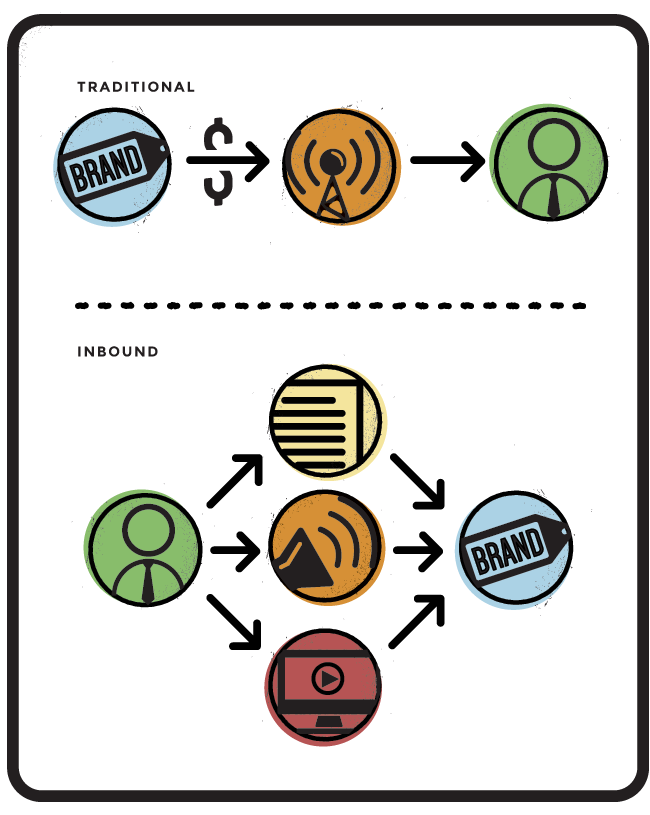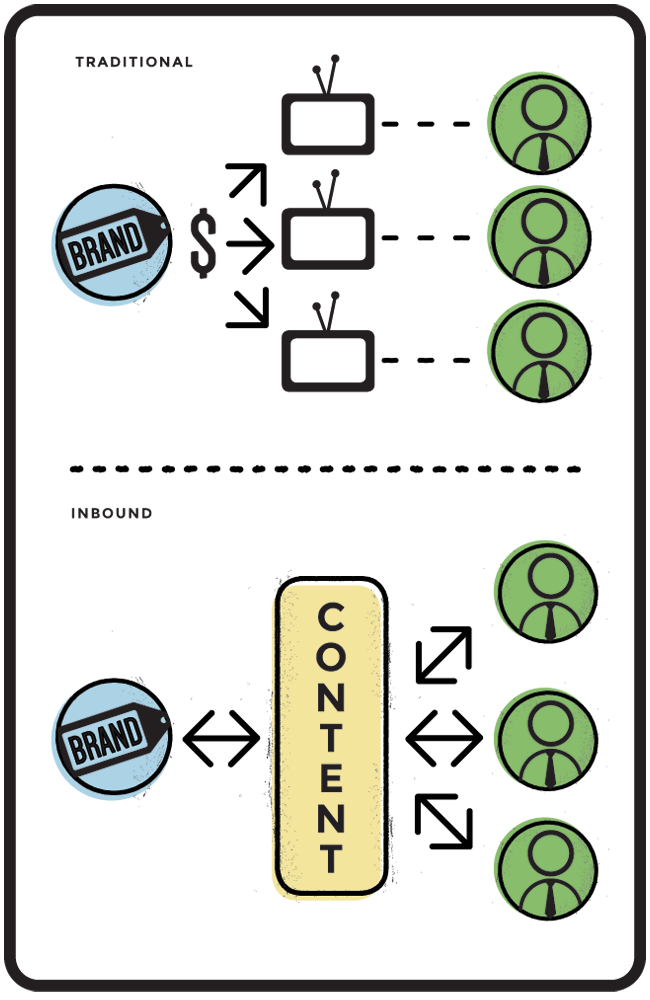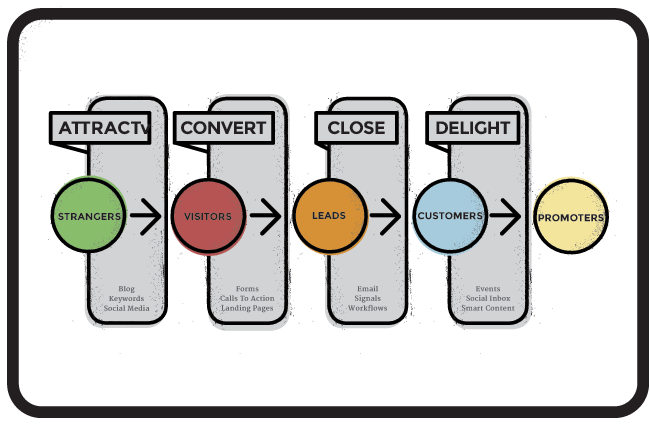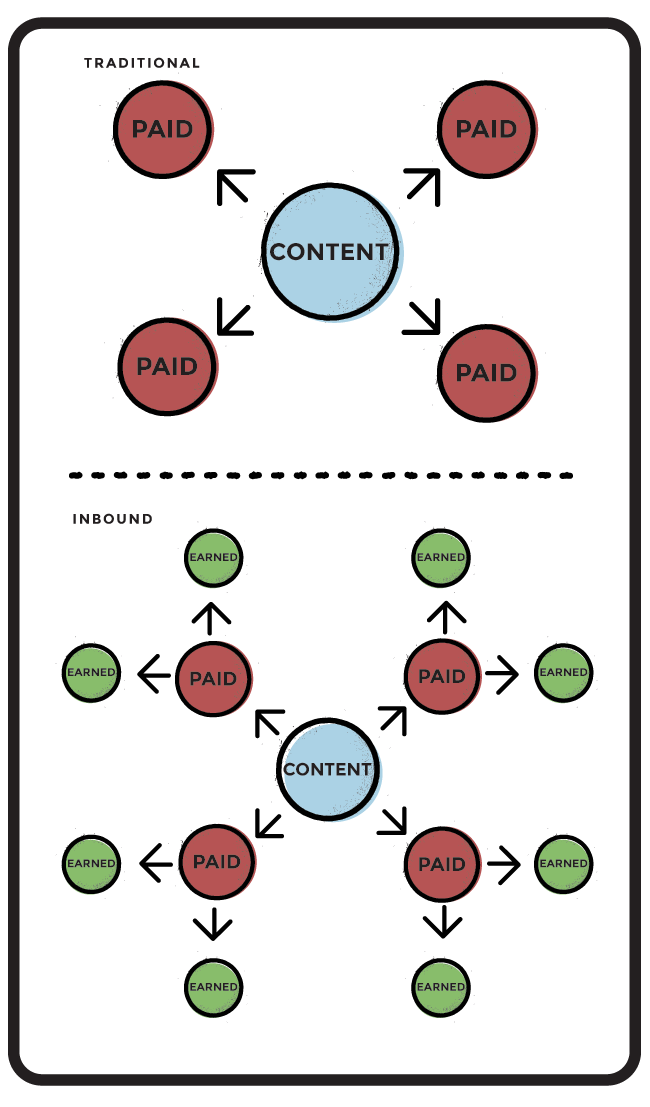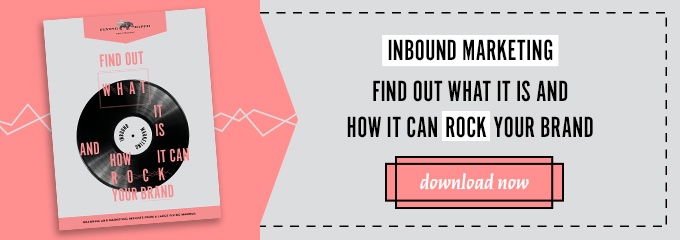How Inbound Marketing Works Differently Than Traditional Marketing in 4 Images
“Inbound marketing” is a buzz term floating around today’s marketing landscape. Many of the world’s best-known marketing experts have been touting the importance of inbound marketing (and, by extension, content). And, it’s an important concept — one that drives the marketing strategies of some of the world’s top brands.
But, let’s get down to the brass tacks: What the heck is this concept and how does it work?
First, consider today’s digital landscape. We find ourselves in the “Connected Era”, where consumers have grown largely disinterested in most advertising messages and marketing has become about talking with consumers rather than at them. But, even though consumers are becoming increasingly blind to advertising, they are consuming more media than ever.
Enter inbound marketing.
Sometimes referred to as “permission marketing” (coined by marketing expert Seth Godin), inbound marketing is, essentially, a reversal of roles from the traditional marketing and advertising models. Rather than brands attempting to tell people about their product, this methodology is centered on giving away something of value — content, often in the form of blogs, white papers, tutorials, videos, etc — to attract customers to your brand on their own accord.
The key difference is that you create something customers want and then let them come to you to find it. It’s a pull mechanism rather than a push.
From the 40’s through the 80’s, marketing enjoyed a very romantic era. You could pay for consumers’ attention with a colorful ad, billboard, or a fancy television commercial.
For brands, though, these forms of marketing have always been like renting attention rather than buying it. Your message is broadcast only for as long as you pay the middle man — the publisher, broadcaster, or billboard owner — to keep it on display, and then afterward you have no way to reach the same people without paying again.
On the other hand, in the digital age, with the ability for brands to build their own communities of fans, followers, and subscribers, the emphasis has shifted on how to create the right kinds of content to build your own audience.
With inbound marketing, you match educational content with the specific challenges your potential customers are facing. Instead of interrupting with cold calls and interruptive ads, inbound marketing attracts people to your website when they’re interested in finding a solution to their problem.
A standard inbound marketing strategy consists of four key pillars:
- Focused and optimized websites, blogs, targeted content, and social media that attract visitors instead of interrupting them with annoying marketing messages.
- Conversion mechanics using calls to action, landing pages, and forms to gather prospect and lead data.
- Lead-nurturing, lead-scoring, and follow-up process that move leads toward the purchase decision.
- Customers are delighted when smart content and social media marketing that delivers personalized content to keep them engaged while delivering ongoing value for the life the relationship.
The inbound marketing mindset is always looking for new ways to provide content that people love, instead of flooding them with messages they want to ignore. Today’s savvy companies are building their brand in new, innovative, and effective ways that allow them to carry on a two-way discussion with customers and prospects. Part of the process that has facilitated this shift in ideology is the expansion of earned media.
Earned media — or, impressions generated by word of mouth — plays a huge role in today’s connected world. Consumers are constantly sharing blogs, videos, photos, and tweets with each other, sending content viral as fast as it can be produced. And, for each earned impression generated through social media and blogs, brands save money they would have otherwise spent on paid impressions.
This means that massive brand exposure is much more attainable through the creation of creative, engaging, and shareable content and a modest budget to generate exposure.
The idea that people are eager and willing to embrace a marketing messages is largely a foreign concept. This is the new world of marketing, where providing real value is more important than elaborate product pitch. And, as the saying goes, “If you don’t like change, you’re going to like being irrelevant even less.”
Taken as a whole, the inbound marketing ideology is a way to create and maintain a constant stream of prospects and leads, built on the creation and distribution of engaging, user-focused content.
Want to learn more about how this sort of strategy could help your company grow? Shoot me an email or give us a call to discuss.
Top image via Flickr user Dan Nevill.

